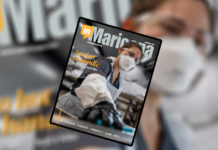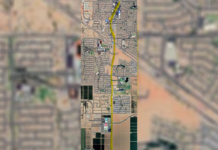
InMaricopa.com is pleased to be bringing you, on a regular basis, timely, useful and informative articles by a wide variety of local experts. This is the first in a series of articles on photography and useful picture taking techniques.
Whether I am photographing people or small objects on a table, I am often in pursuit of “soft light.”
Soft light can be created by using a light source that is relatively large and close to your subject (soft light = BIG and CLOSE). Whether you are using the sun or a flash unit, the principle is the same.
But to truly make the light soft, you will also need to diffuse the natural harshness of light. A light modifier often used to create soft light is a “softbox,” but any type of diffusion will help create softer lighting. You can also diffuse light by aiming it into some sort of reflective object, such as an umbrella, to disperse the light onto your subject. Either way, soft light is born.
Let’s consider an example: You are photographing your sixth grader’s latest art project, a small clay replica of Steve Nash. It looks more like a bobble head rescued from a house fire, but you really want grandpa to see this one. So you set it on purple construction paper on your kitchen table and get the camera out. Light from the small 2 x 3-foot window is streaming through on the left, illuminating the little man in all his glory. The light source is the entire surface of the window, which is quite large in comparison to the clay figure. The big part is done.
You snap it, but the picture looks pretty blah. The direct sunlight causes harsh shadows on the purple paper, and the shadows on Nash’s face are also dark and sharp… all of which makes him less attractive than necessary. Now you draw the curtain, which happens to be a white sheer silk drape. You have just created a makeshift softbox. The size of the light source is still big, but now the light is also diffused. Much nicer. The shadows have softer edges. Steve looks good.
Now you move Steve closer to your light source. As the table is scooted closer to the window, the light starts to “get up in Nash’s face.” It’s OK; he’s used to it. You have just achieved BIG and CLOSE. And now the light not only hits him from the left side, but that window of light will now wrap around and light up the right side as well. The light doesn’t actually wrap around him, but the shadows created by the window light are also being filled by the window light. The shadows become faint and obscure, creating a smooth purple background with gradual shading and subtle shadows on the model of Nash. Steve looks really good.
If you replace the window light with a small flash, placing the same material in front of it as diffusion, the light would not have been as soft. The flash, with a surface of about 2 x 3 inches, is a much smaller light source, and particularly small compared to the mini-Nash.
I worked on a photo shoot of Steve Nash where the goal was to take a nice shot of his face. We used a 6-foot, octagon-shaped softbox on a strobe (flash) from a few feet away – very BIG and very CLOSE. Steve looked pretty fantastic.
Jake Johnson of Jake Johnson Pictures is a Maricopa-based photography who also offers classes in photographic techniques. He can be reached at 602-291-1093 or via e-mail at [email protected].
Submitted photo
Have a topic you’d like to see addressed by a guest expert? Please email it to [email protected] for consideration.












![GAME OVER: The city government tried to get into gaming. It failed Maricopa Esports [Victor Moreno]](https://www.inmaricopa.com/wp-content/uploads/2024/05/263342f5-13e7-4668-838c-f574392086fb-100x70.jpg)


![Carl’s Jr plans to “open soon” An exterior view of the new Carl's Jr. restaurant along John Wayne Parkway on May 7, 2024. [Elias Weiss]](https://www.inmaricopa.com/wp-content/uploads/2024/05/E1C66482-CB4C-4FD0-BA30-35CECE93F4BE-100x70.jpeg)